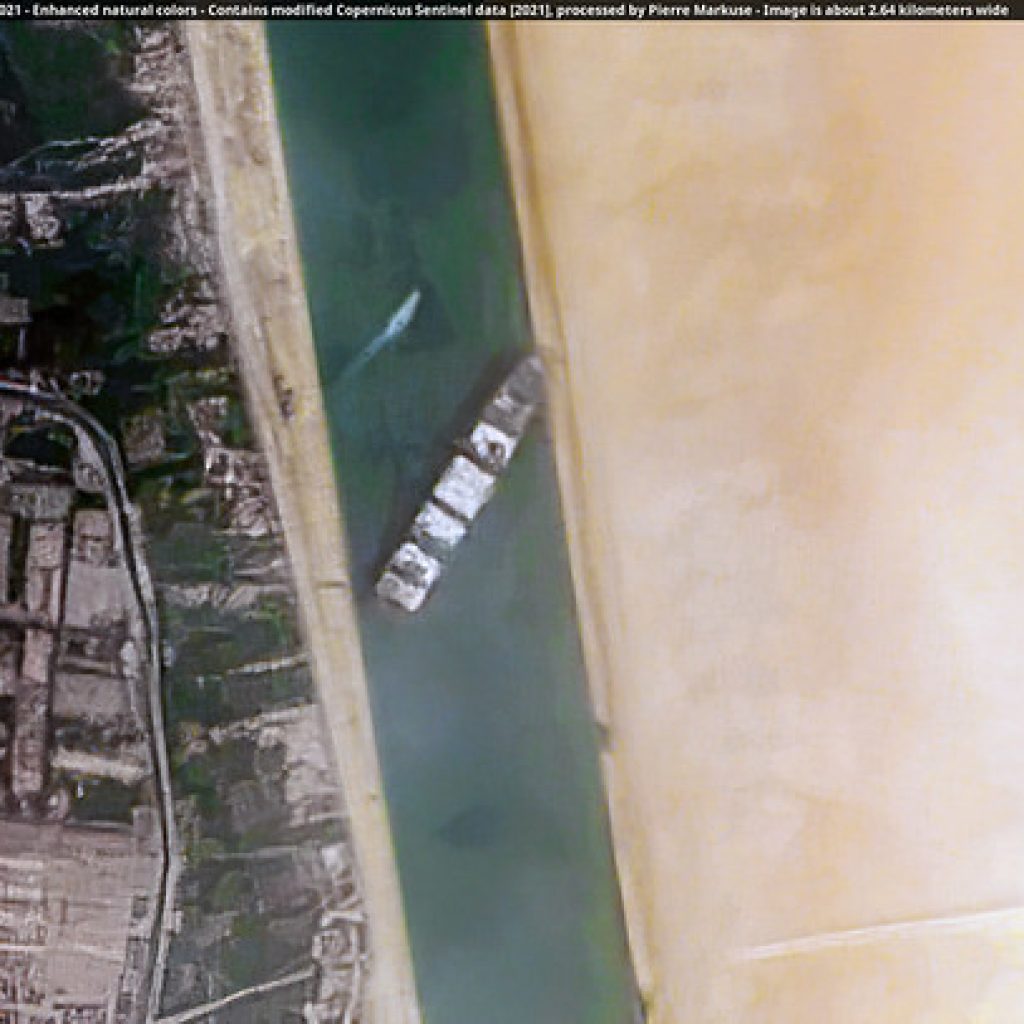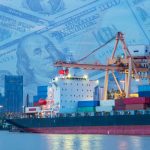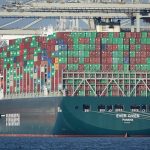Aground Megaship Could Block Suez Canal for Weeks

You thought port congestion at U.S. ports – the Ports of Los Angeles and Long Beach especially – is bad. You’re right. But at least it’s possible for ships to get in and out of the ports (it just takes days). At the Suez Canal, ships can’t go through at all. And it could be that way for weeks!
Who’s Driving That Ship, Austin Powers?
The Suez Canal is blocked right now because a megaship ran aground – it actually got stuck sideways inside it – making it completely impossible for ships to move either direction through the canal. You may have even seen pictures online of the Evergreen’s aground megaship Ever Given. Such images have been circulating since the ship got stuck on Tuesday. After all, it’s not every day you see an ultra large container vessel jammed width-wise in a canal. It looks like the golf cart Austin Powers tried to turn around in the narrow corridor of Dr. Evil’s hideout.
Like Ben Jenkins wonders about how the Austin Powers filmmakers got the cart into this position, there has been much speculation about how the Ever Given got into a similar one. Most of that speculation seems to be centered on the idea that wind blew it off course, causing it to spin sideways.
Stuck in the Worst Traffic Jam You Can Imagine
It appears there is no real damage to the ship or its cargo. What is damaged is international shipping traffic movement through one of the world’s key shipping lanes.
Ahmed Shawkat wrote an article for CBS News that has potentially very bad news on how long it will take to get things cleared up:
Peter Berdowski, CEO of the Dutch company Boskalis that owns Smit Salvage [one of the companies hired to get Ever Given afloat again], said Thursday that it was still too early to determine how long the job might take.
“We can’t exclude it might take weeks, depending on the situation,” Berdowski told the Dutch television program “Nieuwsuur,” according to Reuters.
There are other ships stuck inside the Suez Canal, whose crews can do nothing but wait for the massive cargo ship to get dislodged. We’ve probably all experienced the frustration of being stuck in a traffic jam on the freeway because an accident happened up ahead. Take that freeway situation, increase it exponentially, and you get the situation in which sailors are trapped right now in the Suez Canal.
Port Congestion & Rippling Effect on Global Shipping
All told, more than 30 container ships other than the Ever Given can’t transit the primary waterway that connects Asia and Europe, according to Michael Angell in an article he wrote for the Journal of Commerce (JOC). The result, when the canal finally gets unblocked, will be a tidal wave of ships pushing through the canal and heading for ports. European ports will likely compete with American ones for the title of most congested. Angell writes:
“Every port in Western Europe is going to feel this,” a spokesman for the Port of Rotterdam told JOC.com Thursday. “No terminal anywhere in the world has an unlimited number of docks and cranes to load and unload containers. So when these ships do arrive at their destination, there will inevitably be longer waiting times.”
A spokeswoman for the port of Antwerp said the Suez blockage would have an operational impact on shipping traffic, but it was too early to assess the scale of that impact.
“Every day that the ship is stuck, additional ships will have to wait,” she told JOC.com. “Once resolved, there will be a peak of ships in all Western European ports. If this lasts much longer, it could have a major impact on the global logistics chain.”
Of course, that last sentence in the above quote is probably the one that should concern U.S. shippers most.
Global logistics are all tied together when it comes to international shipping. Port congestion in the U.S. paired with port congestion in Europe certainly will have an effect on U.S. shippers who import and export to Europe. Those who import and export to China, and Asia in general, shouldn’t expect those ports to be unaffected either. However, the latter should see congestion to a lesser degree, as the amount of cargo flowing from Asia to Europe exceeds that flowing in the opposite direction.
Still, this piles on to already existing issues affecting the industry like container and equipment shortages, truck driver shortages, dismal schedule reliability from carriers, and port congestion.
More Blanked Sailings and Rate Increases
With ships getting held up, blank (cancelled) sailings are expected to happen from carriers as well. In his article, Angell shared blank sailing, rerouting, and freight rate increase threats from Lars Jensen, CEO of SeaIntelligence Consulting and a JOC analyst:
… a prolonged delay in moving ships through the Suez will have a ripple effect of forcing carriers to cancel future sailings as they try to catch up with the previous delays, Jensen said. The resulting cancellations in an already tight shipping market could force rates even higher, he added.
“The longer this lasts, the more you will see a situation with a new round of blank sailings a month from now as the vessels stuck in line will be unable to get back in time and hence force blank sailings,” Jensen said.
Unlike the blank sailings instituted by carriers in response to weak cargo volumes, these missed voyages would be structural in nature. When a vessel has been delayed for a week or longer at a given port — or in this case outside the Suez Canal — the carrier will then institute a “structural” blank for that ship’s next sailing to rectify the service schedule.
Angell added that Hapag-Lloyd announced it was considering vessel diversions around Cape of Good Hope. Angell points out how going around Africa like that adds more than 3,000 nautical miles to the transit, longer transit times by at least a week, and the necessity for ships to speed up to maintain weekly schedules. “… an increase of two knots over five days of extra steaming burns an additional 1,000 tons of fuel, according to maritime industry analyst Alphaliner,” Angell says.
You can bet that extra cost would be passed on to shippers, who are already suffering through sky-high freight rates.




